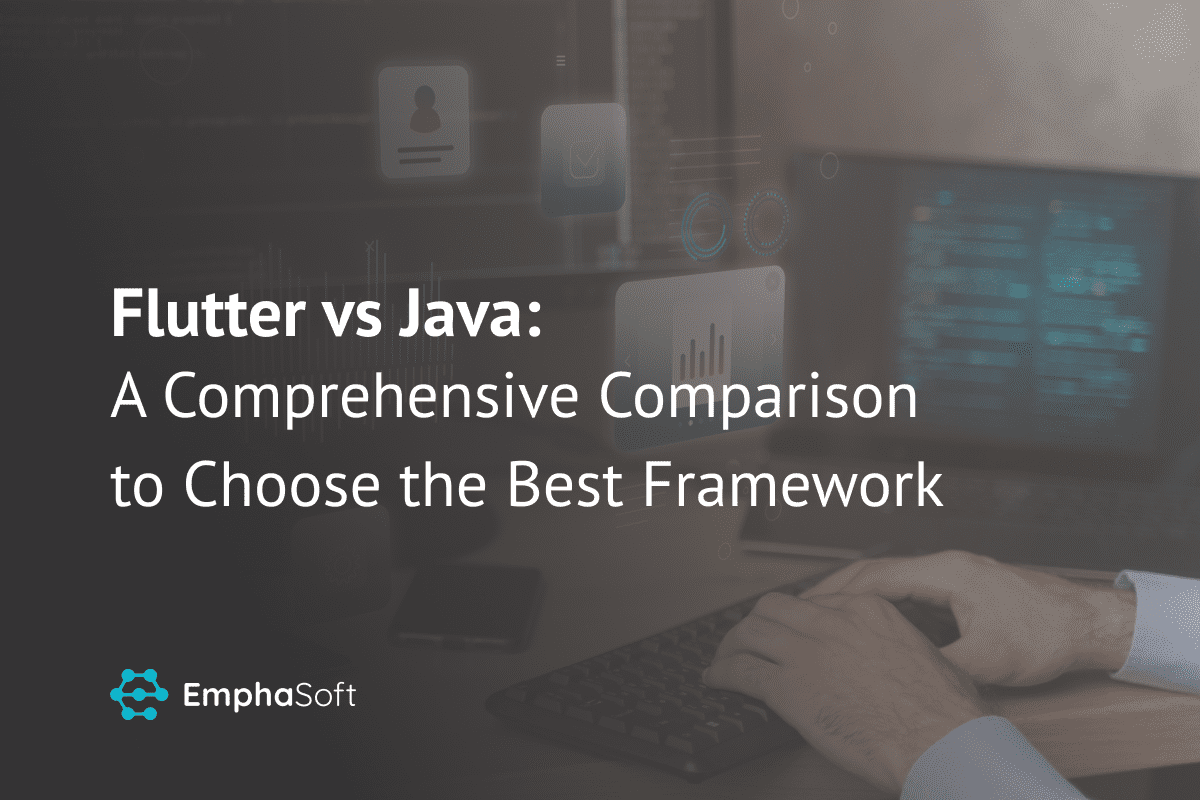If you’re in the process of choosing between Java and Flutter app development services for your project, you might find it hard to understand which one is best for your particular situation.
As a company that works with Java and provides Flutter consulting services, we have vast experience in both. That’s why today we want to talk about the two frameworks, go through their benefits and downsides, and compare them against one another to help you make the right choice for your app development process.
About Java
Java is one of the oldest programming languages. It is object-oriented and was introduced in the 90s for Android app development. Today, it is still very popular and is used for mobile, desktop, and web applications.
Key benefits of Java:
- Relatively easy to learn and work with
- Lots of documentation and libraries are available
- Can build multi-platform applications
- Large community
Key downsides of Java:
- Hard to build native apps with it
- Slow performance compared to more modern languages
- Additional costs are required (e.g. purchasing licences)
About Flutter
Flutter is a relatively new framework that was created by Google. Flutter uses Dart programming language for application development and supports all major OSs (iOS, Android, Google Fuchsia, Windows, Linux).
Key benefits of Flutter:
- Easily scalable
- Platform-independent
- Single codebase
- Fast speed of apps
- Backed by Google
Main downsides of Flutter:
- Apps can be of a larger size
- Limited documentation available
- No support for older operating systems
Flutter or Java?
Let’s do a quick side-by-side comparison of the two frameworks.
Development cost
Both frameworks are positioned as open-source and free, but with Java, you would often require a licence to enable the development or special tools that would add to the overall cost of the digital product. Plus, Java is more resource-intensive when it comes to memory and processing power.
Development speed
Flutter offers a much faster development timeline for two reasons. First, it enables you to use one code for everything. Second, it ulitises dynamically typed language that requires less development time than the statically typed language used by Java.
Cross-platform development
Flutter can work with any platform and the code is used across all devices and OSs. Java requires Java Virtual Machines (JVMs) to run each operating system for development. That makes cross-platform development with Java more cumbersome and complex, but if you are only after Android apps, then you won’t experience this issue.
Ease of scalability
Both Flutter and Java are scalable and can do so without damaging the app’s performance. They enable apps to grow fast but also work great with smaller apps, so if you’re not planning to scale just yet, Flutter and Java would still be good choices.
Safety and security
Flutter was designed to be very secure. Its creators had the benefit of incorporating all known protective measures from the start because the framework is rather young. Java didn’t have this advantage, but as a legacy framework, it has solutions to the majority of potential security hazards that were developed over the years.
Final thoughts
Choosing the best framework for app development mostly comes down to your requirements and resources. Both Flutter and Java allow you to reach the same results but they get you there with different routes.
Flutter seems to be a leader in cross-platform development as the process is very straightforward with this framework. Java is keeping up too, but you might be better off using it if your apps are Android only.
Whatever choice you make, the Emphasoft team will be able to help you bring your vision to life. Our professionals will help you design, develop, and validate your technical solution, and ensure that it’s completely in line with your startup needs.
Read next:
Flutter in development: pros and cons
A complete checklist for App Store submission in 2023
Mobile Application Development Innovations That Redefine The World Of Business









 Schedule a Discovery Call
Schedule a Discovery Call Schedule Call
Schedule Call